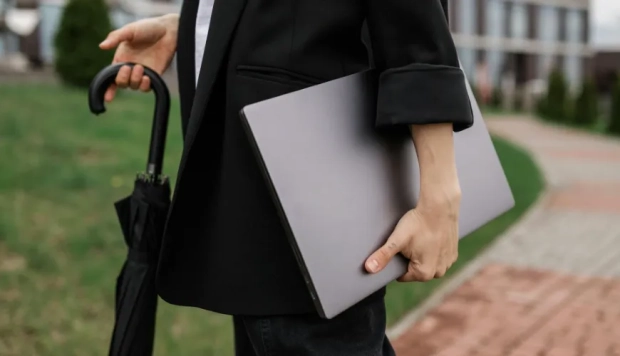Exploring Great Unit Styles and Shade Options for Your Workspace

Creating a workspace that balances functionality with aesthetics is important for improving productivity and inspiration. Whether you're setting up a home office or restructuring a corporate environment, the design choices you make can significantly impact your work.
This exploration dives into various unit styles and color shades that can transform your workspace into an inspiring and effective area tailored to your needs.
Clean Lines and Functional Design
Modern minimalism highlights simplicity and function. This design approach incorporates clean lines, neutral palettes, and multifunctional furniture to optimize space and maintain a clutter-free environment.
Minimalist units, often crafted from materials like metal and glass, create an airy feel that promotes focus and creativity.
With a highlight on light, open spaces, modern minimalism encourages the use of natural light through large windows and strategic furniture placement.
Minimalism allows for easy reconfiguration when the need arises, making it a favorite among dynamic work settings. Remember that the purpose of this design is not just to look good but to create an atmosphere that grows productivity and clarity in your workspace.
Nature-Inspired Designs
Integrating nature into a workspace can have profound effects on well-being and productivity. Nature-inspired designs highlight natural materials, greenery, and earthy palettes to create inviting, calm environments. Options like wood units, stone accents, and plants can help reduce stress and boost focus.
Furniture crafted from sustainable materials supports eco-friendly practices and improves aesthetics. With more cabinets and color choices, you can expand space but keep your style intact, promoting harmony throughout your workspace. Incorporating biophilic design principles can further elevate your workspace.
Spaces that recognize the relationship between humans and nature often invite increased creativity and fulfillment throughout the working day. Adding natural light sources can further improve mood and reduce eye strain.
Water features or nature-inspired artwork can contribute to a soothing atmosphere. Many workplaces find that acoustic panels made from natural fibers help reduce noise levels.
Textured materials inspired by nature can provide tactile comfort throughout the space. Integrating these additional elements can create a more immersive and restorative environment.
Raw Materials and Urban Aesthetics
The industrial style offers a distinct feel characterized by raw materials, exposed brick, and metal accents. This approach draws inspiration from old factories, providing a unique aesthetic that blends form and function.
Units designed in this style often feature reclaimed wood and metal components, which add character and warmth to an otherwise sterile environment. Incorporating industrial elements can evoke a sense of creativity and inspiration.
Open shelving units, metal filing cabinets, and rustic wooden desks can serve as both decorative and functional items that contribute to the theme.
Choosing appropriate color schemes, such as dark grays, browns, and blacks, can further improve the industrial vibe. These tones create a cohesive look that embodies creativity and innovation, ideal for collaborative and brainstorming activities.
Adding textured concrete finishes can elevate the industrial atmosphere. Vintage light fixtures with exposed bulbs can reinforce the raw, urban appeal. Large factory-style windows provide natural light that complements the rugged materials.
Incorporating distressed leather seating can add comfort without compromising the aesthetic. Subtle touches like metal wall art or repurposed hardware can complete the look and maintain authenticity.
Color Schemes
Color can profoundly impact mood and productivity levels in a workspace. Using colors to define different areas or zones can create energy and stimulate creativity.
A bright color palette can evoke feelings of joy and motivation, important for maintaining a motivated work ethic. Incorporate colors such as yellows, blues, or greens to liven up your environment.
The psychological effects of these hues can stimulate creativity and improve cognitive performance. Strategic placement of colorful units or accent walls can make all the difference in lighting up a workspace.
The choice of color should align with your personal preferences and the type of work you engage in. An energizing workspace motivates you to innovate and push boundaries, making work enjoyable.
Bold color combinations can help distinguish collaborative areas from quiet zones. Adding colorful artwork can introduce visual interest without overwhelming the space.
Accent furniture pieces in shades can further tie the design together. Even small items like desk organizers or planters can brighten the aesthetic. Consistent use of color throughout the workspace can strengthen cohesion and boost ambiance.
High-End Materials and Finishes
For those looking to create an upscale workspace, employing luxurious materials such as marble, mahogany, or glass can convey sophistication and professionalism.
Elegant units help establish a successful visual identity, improving aesthetics and productivity levels. Incorporating high-end finishes elevates the entire environment.
Whether it involves custom cabinetry, designer office furniture, or premium lighting fixtures, these elements can create a lasting impact on clients and employees alike.
A well-designed, luxurious workspace improves functionality and serves as a testament to your professional identity. Make sure to think about the balance between elegance and comfort, as both components are critical to an optimal workspace.
Merging Functionality with Modern Innovation
A workspace must accommodate technological needs efficiently. Tech-integrated units simplify organization and access to devices, enabling seamless interaction with digital tools.
Think about units featuring built-in charging stations, cable management systems, and smart features to increase productivity. Designing for technology includes optimizing layout and accessibility for power outlets and communication tools.
An efficient workspace can result in improved workflow and minimized distractions. Guaranteeing that your equipment harmonizes with your chosen style will maintain a cohesive look, regardless of technological advancements in the future.
Highlighting functionality alongside aesthetics allows for the creation of a forward-thinking workspace.
Encouraging Teamwork Through Design
Designing a workspace with collaboration in mind promotes teamwork and boosts creativity. Open-concept areas that facilitate communication and interaction between employees develop a sense of community and belonging.
For environments aimed at collaboration, exposed workspaces and social zones can improve engagement with others. Incorporating shared units and modular furniture allows easy reconfiguration for meetings or cooperative projects.
This adaptability allows teams to express creativity and work more effectively together. Dedicated break areas and casual seating arrangements encourage individuals to unwind and collaborate more casually, further enhancing relationships among team members.
A design that prioritizes collaboration leads to innovative outcomes and a more involved workplace culture.
Space Optimization
In response to the increase in remote work, creating compact and efficient unit styles is important for limited spaces. Multifunctional furniture, such as desks with storage or foldable pieces, can maximize usable space and maintain style and functionality.
Adopt wall-mounted shelves, which expand storage capabilities without cluttering the available floor space. Corner workstations can serve dual purposes, acting as both a desk and an area for brainstorming or meetings.
Tailoring choices based on individual needs allows you to create a functional workspace that resonates with your style and guarantees ease of use in smaller areas.
Space optimization merges creativity with practicality, providing a more suitable environment for both work and inspiration.
Worldwide Design Elements
Drawing on cultural influences can greatly enrich your workspace. Incorporating elements from different design traditions can infuse your environment with a unique character.
Utilizing Japanese minimalism will evoke tranquility, and Mediterranean designs can improve warmth and energy. Integrating textiles, colors, and structures from various cultures personalizes the workspace and develops creativity through a diverse environment.
As businesses expand globally, exposure to different design philosophies can create a rich and stimulating workplace. Combining these influences and guaranteeing coherence contributes significantly to an inspiring working atmosphere.
Selecting culturally inspired elements allows you to celebrate heritage and create innovative, contemporary environments.
Prioritizing Comfort and Well-being
Creating an environment focused on health and comfort is important for long-term productivity. Ergonomic units promote physical well-being through adjustable heights, supportive seating, and optimized layouts.
Proper alignment and comfort can greatly reduce the risk of injury and improve focus. Investing in ergonomic furniture can lead to sizable benefits, including increased employee satisfaction and productivity.
Providing options like sit-stand desks encourages movement and variety throughout the day. Striking a balance between aesthetics and comfort guarantees a long-lasting, enjoyable workspace experience.
Integrating elements that facilitate good posture, lighting, and airflow contributes to the well-being and vigor of individuals working in the space.
Eco-Friendly Choices for Your Workspace
As environmental consciousness grows, creating a sustainable workspace becomes increasingly important. Select materials that are eco-friendly and recyclable, like bamboo or reclaimed wood, to minimize ecological impact.
Sustainable design practices improve your workspace and resonate positively with clients and employees. Aiming for energy-efficient lighting and appliances can significantly reduce energy consumption.
As more businesses shift focus toward sustainability, choosing eco-friendly furniture aligns with broader environmental goals.
Creating an atmosphere that reflects eco-conscious values promotes a sense of responsibility and commitment to positive change. A sustainable workspace empowers you to work in an environment that prioritizes health and wellness for both individuals and the environment.
Making Your Workspace a Reflection of You
Personalizing your workspace allows you to develop a sense of ownership and pride in your environment. Incorporating personal items, such as photographs, artwork, or souvenirs from travels, can imbue your area with character and warmth.
This expression of individuality can lead to increased happiness and motivation among employees. Creating a workspace that represents your values and style develops a welcoming atmosphere for both you and your colleagues.
Find ways to incorporate personal touches that improve the unifying aspects of your workspace. Engaging with a personalized design encourages better collaboration, communication, and productivity, creating an environment that is functional and uniquely yours.



